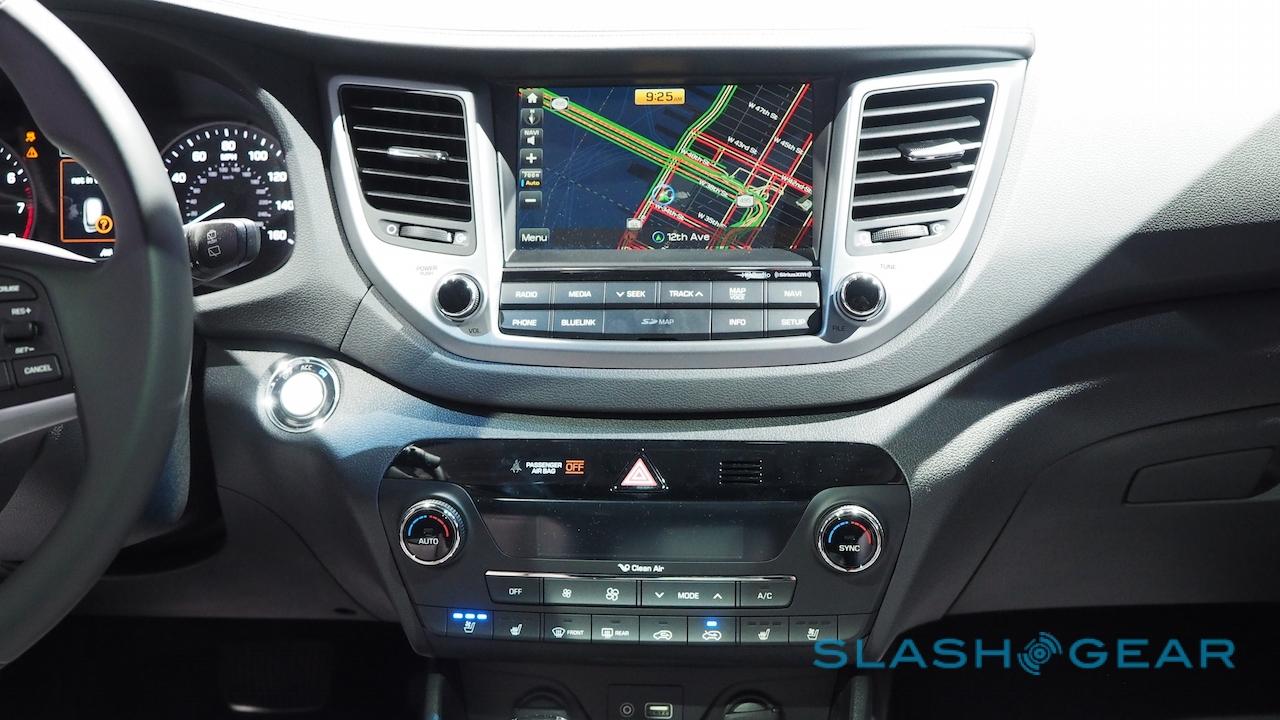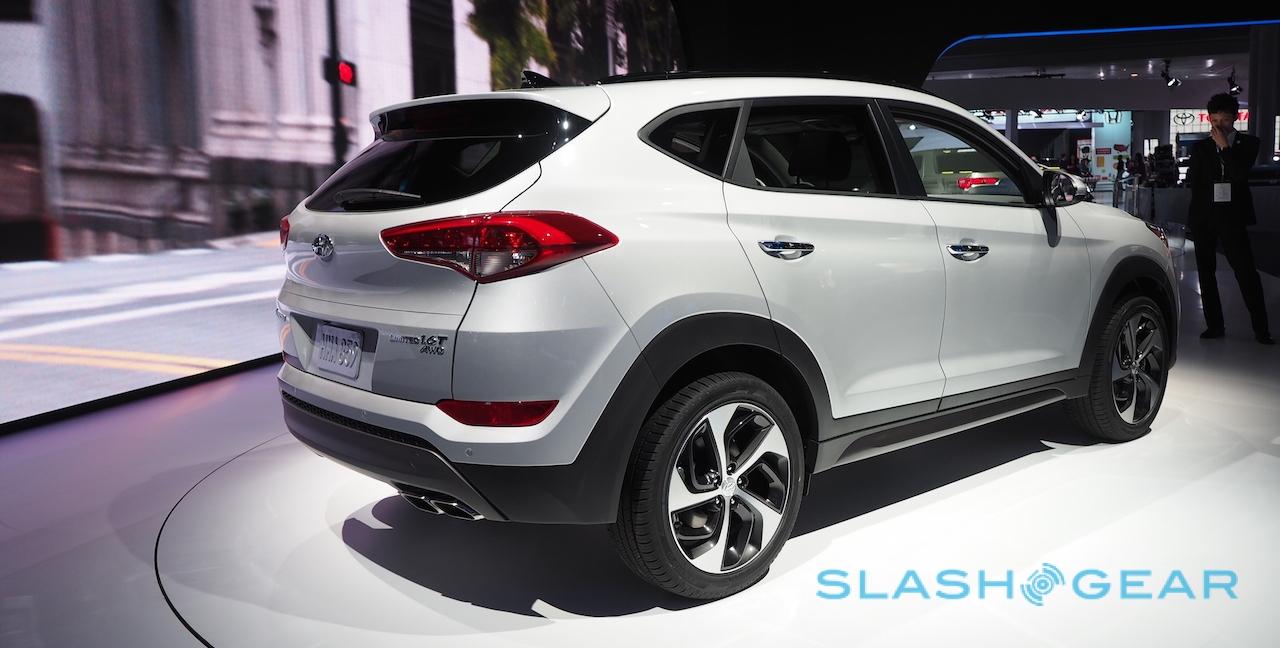Hyundai's 2016 Tucson Bets On Safety And Economy
If you hadn't already realized it, the crossover is the must-have automotive trinket of the moment, with just about every brand weighing in with a baby SUV of their own. Now it's Hyundai's turn, whipping the silky covers off the 2016 Tucson, its own take on the segment with a focus on cosseting and fuel economy. Set to go on sale in July, the new crossover has a longer wheelbase than its predecessor, and now sits on optional 19-inch alloys for a meatier look. Really, though, this is all about braving the urban jungle in safety.
So, there are options like automatic emergency braking that can automatically spot pedestrians, lane-departure warnings and blind-spot detection, rear cross-traffic alerts, lane-change assistance, and backup warning sensors. Bear in mind you'll have to do some heavy-duty ticking of the options list if you actually want to have them fitted, however, since while a reversing camera and tire pressure monitoring are standard, most of the other kit is a paid extra.

Nonetheless, with them fitted, Hyundai is expecting the Tucson to score a Top Safety Pick+ rating from the IIHS. There's more than 50-percent high-strength steel in the structure, too, to cut the risk of intrusions into the passenger cabin in the event of a crash.
Meanwhile, engine options start with a 2.0-liter four-cylinder with 164 HP, 151 lb-ft of torque, and a 6-speed auto transmission, and top out with a 1.6-liter turbocharged four-cylinder, with 175 HP, 195 lb-ft of torque, and a 7-speed DCT. They're expected to deliver 23/31/26 mpg (city/highway/combined) and 26/33/29 mpg respectively.

AWD will be an option, with active cornering that shifts torque to whichever wheels have the most grip, and there's hillstart assist as well as downhill brake control. The power steering is electric, has expanded tilt/reach adjustment, and should be smoother than the old system.
Inside, it's sturdy and solid, if not the most inspiring design. A big 8-inch touchscreen in the center stack is an option, probably a good thing to spec out since the 5-inch screen that comes as standard is likely to be dwarfed in the broad console.

That larger display also works with the companion Yelp app which comes preloaded, and is integrated into the navigation system. An optional 405W eight speaker audio system is on the list, too, and Hyundai's Blue Link companion smartphone app supports remotely programming destinations through Google Maps, remote unlock/start/climate control, and roadside assistance.

It's hard to imagine that the 2016 Tucson will set the motoring world on fire, but that's probably not what Hyundai is intending it to do. Instead, it's sensibly playing on the safety and economy elements that many young families are most interested in, with a design that's at least a few notches above in aesthetic appeal compared to its predecessor.
Hyundai says the Tucson will hit dealerships in July 2015, and while pricing hasn't been confirmed yet, the current model's $21,650 starting point is likely to be the company's target range. Hopefully, if interest is sufficiently strong, Hyundai will also green-light its appealingly-odd Santa Cruz concept.










